By Jeffrey S. Evans
“Nobody wants glass anymore” is one of the most common off-the-cuff remarks that we hear today. In fact, collectors do still want glass, just not the same glass they did 20 years ago. This article will offer a brief explanation for the changing antiques market, and then present 19th century glass that is still in high demand and short supply – also known as basic supply and demand.
The Collecting Boom and Bust – and a Light at the End of the Tunnel?
Collectors have been drawn to 19th century American glass since the first decade of the 20th century, at a time when some of what was being collected was less than 50 years old. With the publication of new research in the field by pioneers Helen and George McKearin, James H. Rose, Ruth Webb Lee, and others, the number of American glass collectors and clubs began to explode. This strong interest continued throughout the twentieth century fueled by new research and reference volumes, active collector’s clubs, and well-attended antiques shows, which along with club seminars served as venues for assembling and exchanging collecting stories and new finds, as well as buying and selling.
As we approach the end of the second decade of the twenty-first century the glass market, and the antiques market as a whole, has changed dramatically. People’s collecting habits have changed, including what they collect and how they collect. While antiques collecting has always incorporated a cyclical element, the current market has been affected profoundly by three factors: demographics, the Internet, and the Great Recession of 2008. These factors combined to produce what could be referred to as the “perfect storm” causing the downturn of the glass/antiques market.
The first two factors mentioned have presented the largest shift in supply and demand. While the cumulative effect of this combination is complex, the basic outcome is that the supply has exceeded the demand in most areas of the market. The vigorous price levels of the 1990s and early 2000s were simply not sustainable. Demographically, the aging and passing of older collectors from that robust period has resulted in more collections being sold than active, younger collectors can absorb. This, combined with the explosion of the amount of antiques available for purchase though Internet auctions and on-line stores, means today’s collectors have more material than ever to choose from and can be more selective when adding to their collection.
The Great Recession of 2008 served as an impetus to the market downturn. The eight-trillion dollar burst of the United States housing bubble and loss of over eight million jobs jolted the antiques market. The great uncertainty of the times caused collectors to withdraw from the market while also eliminating all demand from decorators and those associated with the housing sector. While the economy overall has bounced back from the recession, the antiques market has been much slower to respond due to younger collectors not having interest in the same things their parents and grandparents coveted.
That being said, things appear to be turning around a bit in the glass market. It is generally accepted that most categories will never return to the price levels seen in the late 20th and early 21st centuries, but we will see in the report to follow, demand for the rarest and most desirable material has returned.
Early American Pattern Glass (EAPG) has been a mainstay of the glass-collecting community since Ruth Webb Lee published the first comprehensive volume on the subject in 1931. The field is supported by an active collecting club, the Early American Pattern Glass Society (EAPGS) which has a strong internet presence boasting over 20,000 members on their Facebook page. The group is aggressively documenting glass patterns and forms that were produced between around 1845 and 1920, and is making the extensive, illustrated research available through their website. This is certainly helping to draw new collectors to the field and helping demand catch up with supply.
While most EAPG is selling for 20-30% of pre-recession prices, great rarities in top condition can still draw strong prices. The Argus (original manufacturer’s name)/Early Thumbprint spherical covered compote (Fig. 1) illustrates this. It is the largest of the four sizes produced, in near mint condition, and sold at our September 26, 2018 auction for $35,100 – a record price for any piece of EAPG. Produced by Bakewell, Pears & Co. of Pittsburgh, PA around 1860, this example measured 20 inches high overall with a bowl diameter of 11 inches. There are only four recorded examples of this largest size. Smaller examples reside in the collections of the Corning Museum of Glass, the Metropolitan Museum of Art, and the Philadelphia Museum of Art. The only complete set was assembled by the late Pennsylvania collector Harry Hoffman and was illustrated in the catalogue of his collection sold by us September 30, 2006.
Two other categories of Early American Pressed Glass, lacy-period open salts and cup plates, have survived the downturn better than most other glass categories. This can be attributed to the presence of detailed reference volumes and continued research allowing for specific identification of each example, and the fact that all pieces are small allows for easy display and shipping. While common cup plates continue to sell for under $10 and salts under $20, the rarest of the rare still demand strong prices. During our November 2018 dispersal of the landmark Alvina Breckel collection, a unique Henry Clay steam locomotive open salt (Neal HL-4 designation) sold for $22,230 (Fig. 2). A colorless George Washington round cup plate (Lee/Rose No. 560 designation), one of three recorded examples, sold for $14,040 (Fig. 3). Both pieces were originally in the famous William J. Elsholz collection, retained an impeccable provenance, and were in outstanding condition.
Nineteenth-century lighting continues to be a strong category overall supported by active collector’s clubs like the Rushlight Club, the Historical Lighting Society of Canada, the Aladdin Knights, and the Night Light Club, along with numerous Facebook groups and private websites. The rarest of the early whale oil lighting devices continue to be highly sought after, proven by the pair of deep purple-blue examples with free-blown fonts and pressed stepped bases from our auction of the Joan E. Kaiser collection, May 20, 2017, at $26,910 (Fig. 4). The Boston & Sandwich Glass Co., Sandwich, MA, produced the pair around 1830. They were in outstanding condition and retained an impressive provenance as well as exhibition and publication histories. The miniature lamp or night light market continues to be robust. Produced in the United States and across Europe during the nineteenth and early twentieth centuries, collectors especially seek out art glass and extremely unusual specimens like the Nailsea Nautilus example, standing only 11 ¼ inches high to the shade top, that sold at our October 13, 2017 auction for $12,870 (Fig. 5).
American and European art glass is an extremely broad field with many categories holding their own in the current market. The internet has provided great exposure and a boost over the past ten years allowing for a sizable majority of Continental wares to sell back to collectors overseas. Continued scholarly research and on-line publications have contributed to the demand for rare Loetz and other Bohemian glass. The same can be said of Gallé, Daum Nancy, Thomas Webb, and other artistic wares. The market for highly accomplished Tiffany, Mount Washington, and other American art glass continues to fall within, or often above pre-recession levels. This beautifully decorated Burmese free-form vase, standing 6 ½ inches high overall, sold for $16,380 (Fig. 6), and this Mount Washington Royal Flemish water pitcher commanded $9,560 (Fig. 7) at our fall 2017 and 2018 art glass auctions.
Another internationally collected form that has benefited greatly from internet exposure is the paperweight. Often called “art frozen in glass,” both antique and contemporary weights continue to mesmerize collectors old and new. Their small size makes them easy to display and ship, which also contributes to their popularity. This antique French Clichy C-scroll millefiori paperweight, 3 inches in diameter, sold for $8,190 (Fig. 8) during our March 23, 2018 paperweight auction.
Two other categories that have a strong base of younger collectors, and thus have fared better than most other glass, are bottles and marbles. The demand for rare colored flasks and bitters bottles has remained relatively strong over the past decade with a number of unique examples bringing record prices. Much of this interest can be credited to the work of the Federation of Historical Bottle Collectors and the many regional bottle clubs that continue to research and publish on the subject. As in many other glass categories, color is what usually drives bottle prices. This large-size blown-molded Beaded Flute commercial cologne bottle in a brilliant teal color sold for $3,042 (Fig. 9) in our May 26, 2018 auction. Marbles have delighted collectors young and old for many years. Here, size plays a major role in value, as does color, design, and condition. Because they were made to be played with and not collected, antique large “shooter” marbles in mint condition are difficult to find and bring a premium price, exemplified by this mint 1 ½-inch diameter Lutz Onionskin featuring mottled green, yellow, and white with gold flakes, which sold for $9,360 (Fig. 10) in our February 16, 2018 dispersal of the Sisson marble collection.
As you look at the above, please keep in mind that this represents only the upper echelon of the current glass market. Just like markets over the past 75 years, the top rarities in the best condition are the pieces that draw the most interest and sell for the highest prices, while the more common and ordinary material draws minimal interest and low prices. That being said, it should be made perfectly clear that the glass market is not the only sector of the antiques field that has experienced a decided slump. Unless you have been fortunate enough to be collecting high-grade American coins and comic books, or antique firearms, we are all in the same boat.
On a positive note we are seeing former collectors reentering the market, and new collectors jumping onboard, all enticed by the great values currently available. The internet provides another jumping-on point for new collectors and an important promotional venue providing massive exposure to all fields of antiques. It is essential for collector’s clubs to take advantage of this exposure to draw in new collectors. Like in years past, the future market will be in response to new research, articles, and publications. What is different is how this information is presented and disseminated in order to attract and engage new groups of collectors.
Yes, it is a great time to collect glass. There are so many great opportunities to acquire things that used to be out of our reach, and if everyone works hard to promote the glass market, the demand will once again be more than the supply.
Jeffrey S. Evans is president, head specialist, and principal auctioneer at Jeffrey S. Evans & Associates in Mt. Crawford, VA. He has studied American glass for more than 40 years and lectured widely on the subject. He has also published many glass-related articles and produced over 100 glass-specific auction catalogues. Evans has worked as an appraiser and consultant for many museums including the Corning Museum of Glass, Old Sturbridge Village, the Sandwich Glass Museum, the WV Museum of American Glass, and the Seattle Art Museum. He is also recognized as a leading authority on 18th and 19th century Shenandoah Valley of Virginia furniture and decorative arts and has served as guest curator at the Museum of the Shenandoah Valley and the Virginia Quilt Museum.
Jeff and Beverley Evans founded Jeffrey S. Evans & Associates, formerly the catalogue department at Green Valley Auctions, in 2009. The firm conducts monthly, catalogued auctions specializing in Americana, glass and lighting, ceramics, fine art, decorative arts, jewelry and silver, textiles, etc. Detailed catalogues are produced for each auction and published on the firm’s website jeffreysevans.com, as well as LiveAuctioneers and Invaluable. Over 100,000 past-sales results from 2004 to present are accessible through the firm’s website.




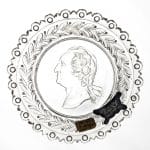


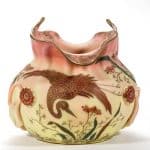

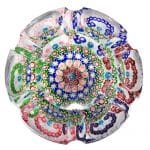
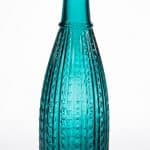
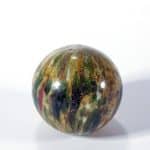



Related posts: